|
|
Unveiling the Hidden Connections between E-mobility and Smart
Microgrid
Motivation
Today's world faces a global dilemma of increasing demands for energy. The existing electric power plants convert only one third of fuel energy
into electricity. Almost 8% of the generated electricity is lost in transmission while 20% of the electric energy is generated to meet peak demands
for only a short period of time (5%) [1]. Moreover, existing electricity networks do not contain storage units, which means that the energy generated
from fossil fuel and nuclear power plants must be balanced with the energy consumed by the end users [2]. In addition, the existing electric power
grid may suffer from domino-effect failures due to its hierarchical topology of transmission and distribution networks. In fact, nearly 90% of power
disruptions occur in power distribution networks [1]. The existing electric power grid is unidirectional in nature and does not have real-time
information about the service parameters of the customer demand. Further, the current electricity generation relies heavily on fossil fuels and
causes 41% of the world’s CO2 emissions (see Figure 1a) [3]. Coal and peat electricity generators emit more than 70% of the
total CO2 emission of the electricity sector (see Figure 1c).
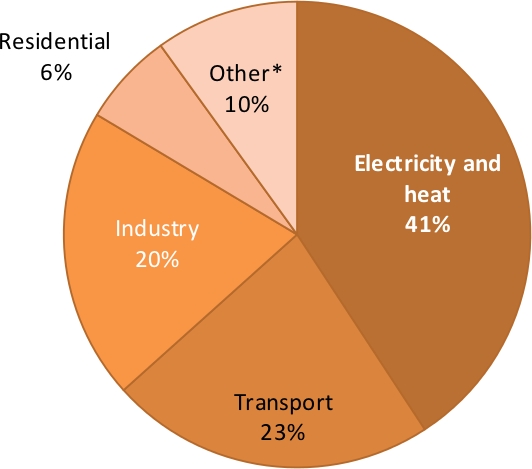
Figure 1a: World CO2 emission by sector in 2009 [3] |
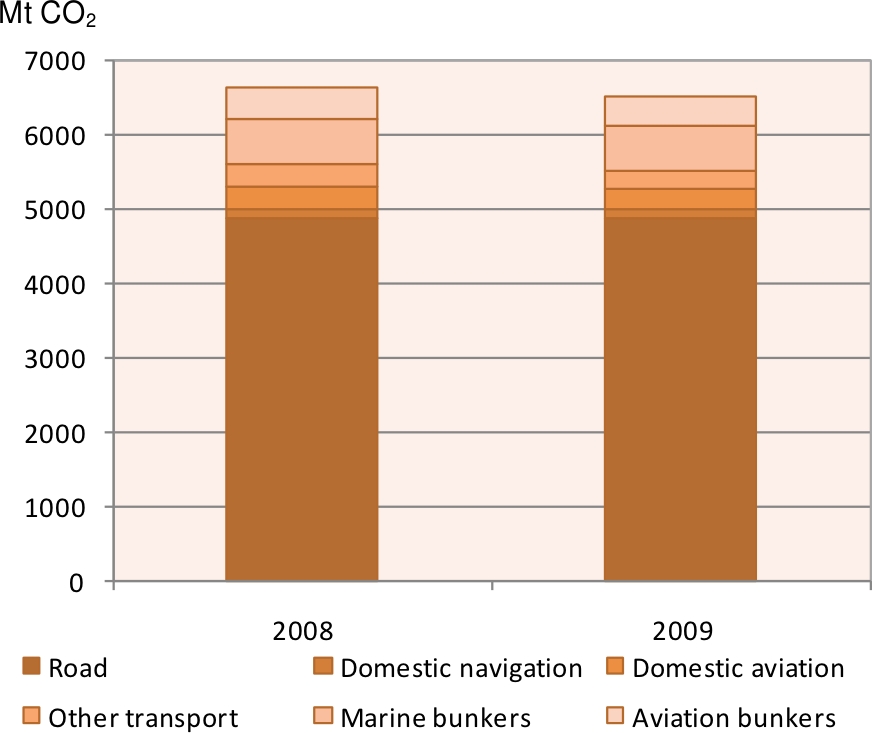
Figure 1b: World CO2 emission from transport in 2008 and 2009 [3] |
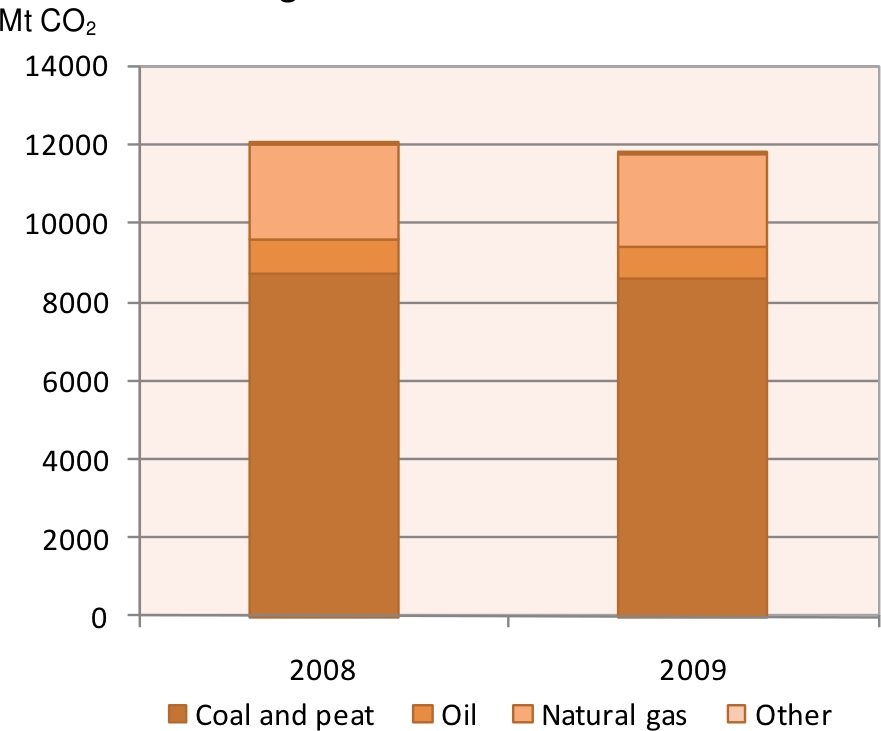
Figure 1c: World CO2 emission from electricity and heat generation in 2008 and 2009 [3] |
Conventional transportation vehicles operate on the principle of internal combustion engine (ICE) that runs on fossil fuel, e.g., gasoline or diesel.
An ICE emits 23% of the global CO2 emission (see Figure 1c) [3]. The above two mentioned sectors together account for two third of the
global CO2 emissions, as shown in Figure 1a, whereby road vehicles emit 75% of the total amount of CO2 of the transport sector.
E-mobility
E-mobility refers to vehicles which rely on plug-in electricity to operate. As second biggest emitter of CO2, the transport sector, especially
passenger cars, needs substantial improvement of its impact on the environment. Electrical vehicles (EVs) have been around since a century. They
were very popular and sold reasonably well till 1918 [5]. However, the use of EVs for transportation died out as the gasoline powered engine
continued to improve. As environment preservation becomes an important issue around the world, EVs are poised to gain more acceptance from the
governments and general public. EVs offer many benefits over traditional fuel run vehicles, such as high energy efficiency, low greenhouse gas
emission, potential to use locally generated electricity (microgrid). Moreover, EVs' batteries can be used as energy storage for microgrids, as
for a large amount of time it is idle. The intermittent nature of the power sources of smart microgrids requires storage to store excess power
generated during off-peak hours in order to use it during peak hours. The EVs may play a dual role in microgrids. They can appear as loads when
charging and as power sources when discharging. The EV’s charging load on smart microgrids may vary in time, as does the SOC (state of charge) of
the vehicle batteries. The total electric power required from a microgrid at time t can be expressed as follows
 |
(1) |
where EVsdemand(t) equals the total demand of n EVs at time t, EVisoc(t) and
EVisoc(t-1) represent the SOC of i-th EV at t and t-1, repectively,
with 1 ≤ t ≤ 24 hours.
If the EVs are used as storage for grid electric power, then the effective electric power required at time
t is given by
 |
(2) |
where i ≠ j, m is the number of EVs in V2G (vehicle to grid) operation and N is the total number of EVs in
the microgrid, with m+n ≤ N. EVjminthchar(the minimum threshold charge) denotes the maximum discharge depth of
EVj's battery. If the energy level in an EV battery is lower than the minimum threshold charge, then the energy transferred
from V2G is zero. Using EVs as a microgrid storage will not only minimize the capital cost of microgrid energy storage but also save costs for
EVs owners.
Smart microgrids
Smart microgrids are self-sufficient clusters of local generators, loads, and storage devices. They encompass a wide range of environmentally friendly
power generation technologies such as hydro power, wind turbine, photovoltaic etc. With respect to the distributed energy generation, the microgrids
usually have electric power generators nearby the customers, which could be operated by them. The smart microgrids have then the potential of reducing
greenhouse gas emission by addressing the major shortcomings of the existing power grid, such as the transmission and the distribution losses. They
empower consumers to interact with the energy management system to adjust their energy usage in order to reduce their energy costs. Also, the smart
microgrids, as two way energy distribution and communication networks, have access to the real-time user demand and are able to optimize customers power
consumption [4]. Currently, there are two types of microgrids: “grid connected” and “islanded”. Figure 2 shows a typical “grid connected” microgrid and its
components. It contains a central controller, loads, power sources consisting of wind turbines, photovoltaic systems, fuel cells and energy storage systems.
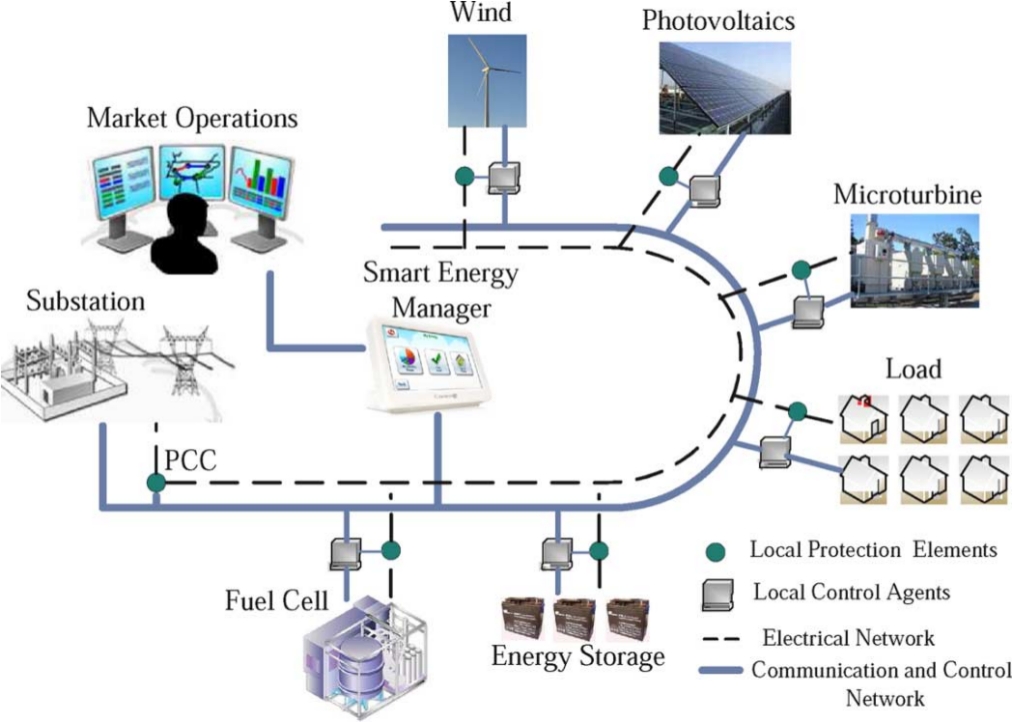
Fig. 2. Smart Microgrid [2].
Power sources
The smart microgrids suppose distributed electric power generation. Various green distributed power generators can be integrated such as hydro-electric,
wind electric energy, photovoltaic, earth thermal power etc. Most of the renewable power sources are stochastic in nature. The availability and the capacity
of the renewable power sources could also depend on the geographic position of the microgrids. Some renewable energy sources, such as wind and solar energy,
depend on the weather conditions. A weather forecasting model could improve then the short term electric energy management.
Vision and benefits
The interconnection management system manages the power flow from outside to the microgrid in case of shortage of power and to other microgrids or to the
external power grid, in case of excessive power generation. The establishment of microgrids increases the reliability of the electricity supplies by the
existence of storage systems. The use of the emerging information and communication technology (ICT) makes up the smart microgrids, i.e. intelligent power
distribution networks which automatically reroute the power flow in case of unexpected line fault. During power grid failure, smart microgrids will operate
in islanded state, which continuously supply power to the community/area intended for. Various studies (see Table 1), assessed the global and country wide
positive impact reducing the CO2. For example, the GeSI study emphases four main ways the smart grids could reduce CO2 emissions.
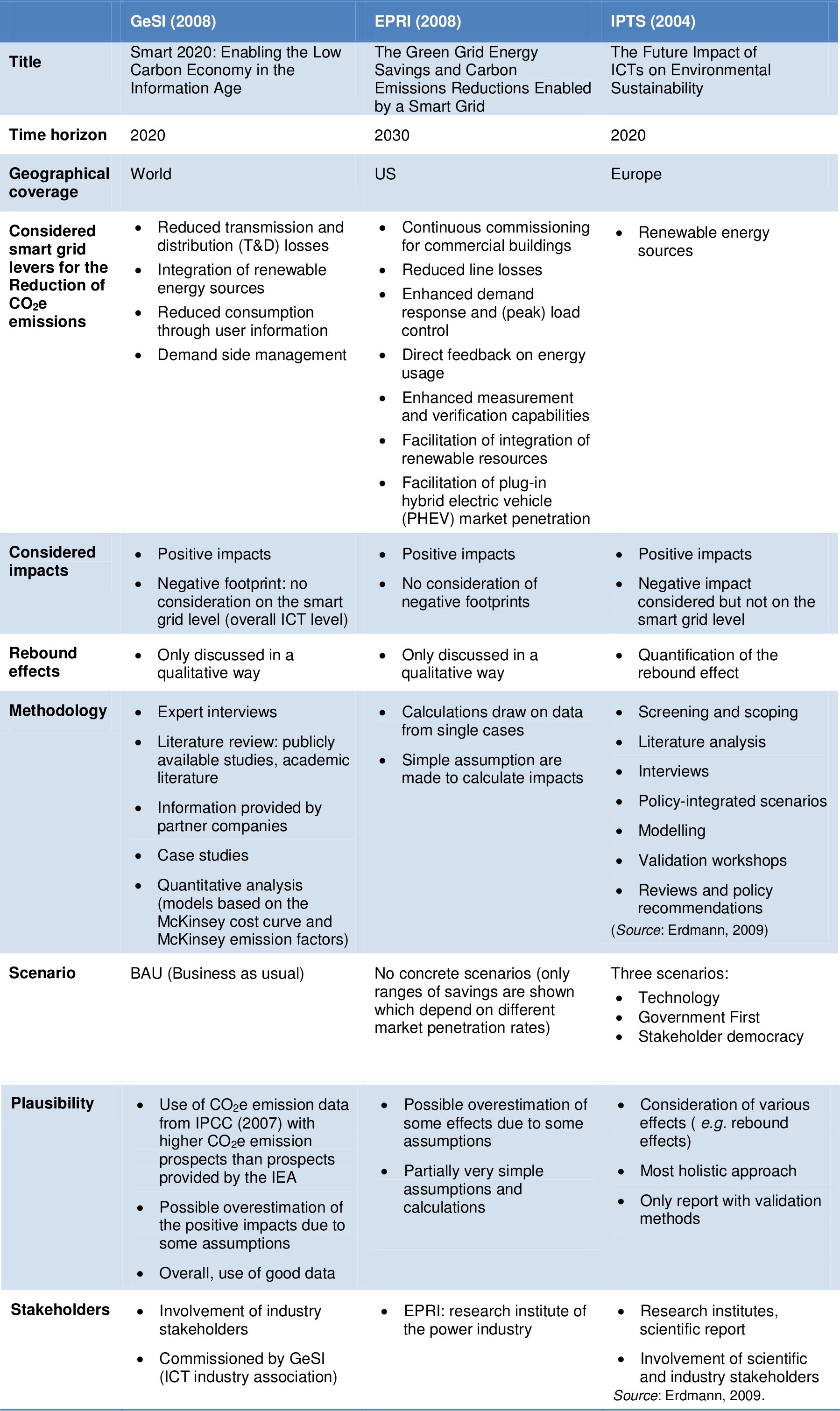
Table 1: Impact of smart microgrids: the GeSI, EPRI and IPTS studies [4].
The broken down contribution of the levers identified in the GeSI study (see Table 2) [4] emphasizes that the “transmission and distribution losses” and the
“integration of renewable energy sources” account for most CO2 contributions, i.e. 1,72 Gt out of the total 2,03 Gt CO2 globally. Also, a substantial reduction
of 0.28 Gt could be obtained by the “reduced consumption through user information”.
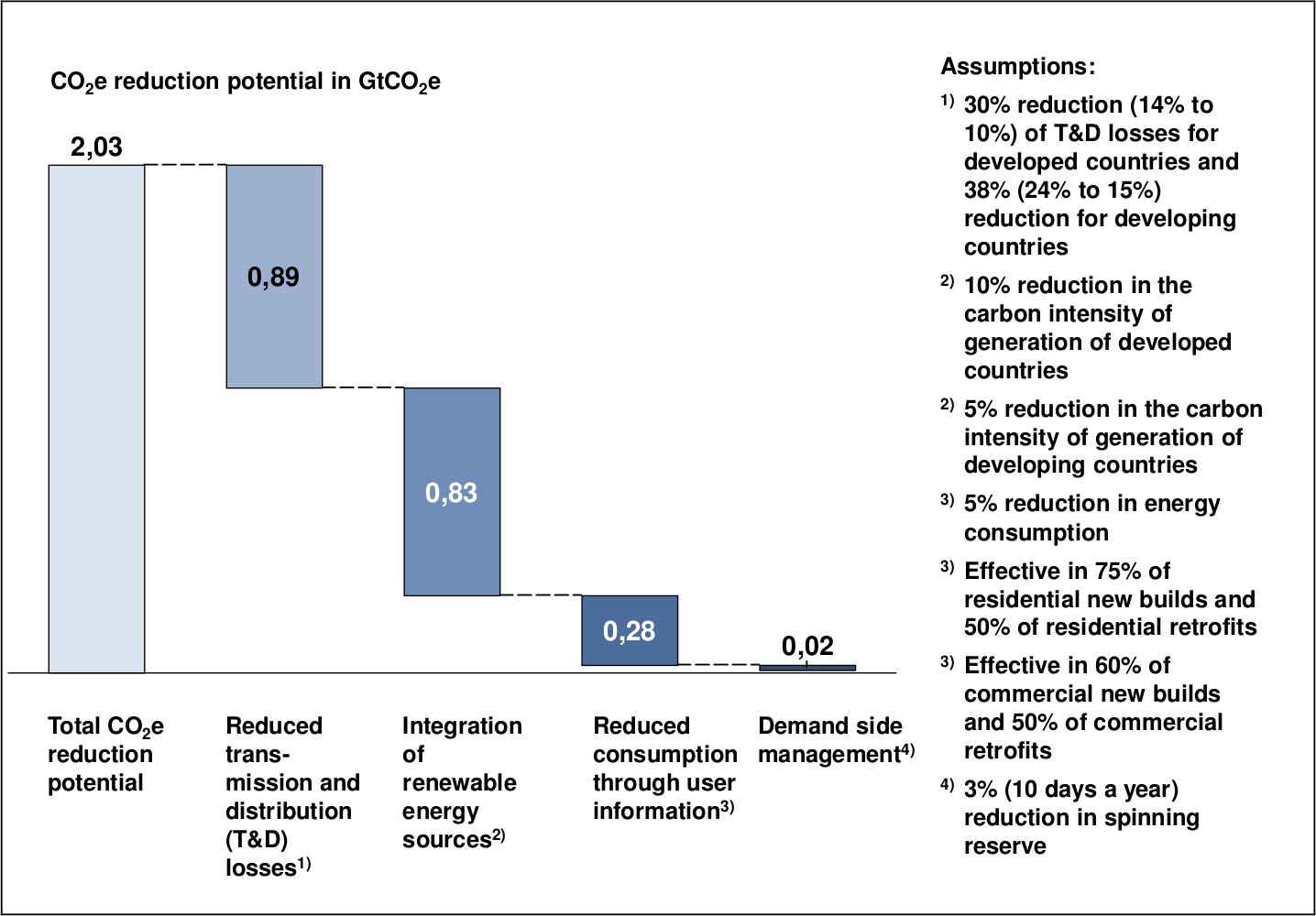
Table 2: Positive Environmental Impact of smart microgrids [4].
Table 3 summarizes the positive impact on environment from EPRI USA studies. It shows that three major steps (“direct feedback on energy uses”,
“integration of renewable energy sources” and “facilitation of PHEV market”) may reduce the US CO2 emissions from 2,11 Mt to 0,46 Mt CO2. An efficient
management and the use of emerging technologies, such as ICT, facilitate the smart microgrids to use EVs batteries for power storage of the electricity
generated during off-peak hours. The charging/discharging cycle increase the life of the battery. It appears that if the battery degradation cost is applied,
the corresponding profit alone may provide an incentive to the EVs' owner to use their battery pack for electricity storage [6]. V2G service could be sold in an
organized market as an ancillary services or it could be used to avoid grid electricity surcharge. The use of wireless charging technologies allow the EVs and
eventually other house hold equipment to charge without delay. Currently over 40% of fuel is consumed by transportation systems and residential houses.
Deployment of microgrids and EVs may decrease the use of fuel near to 0%.
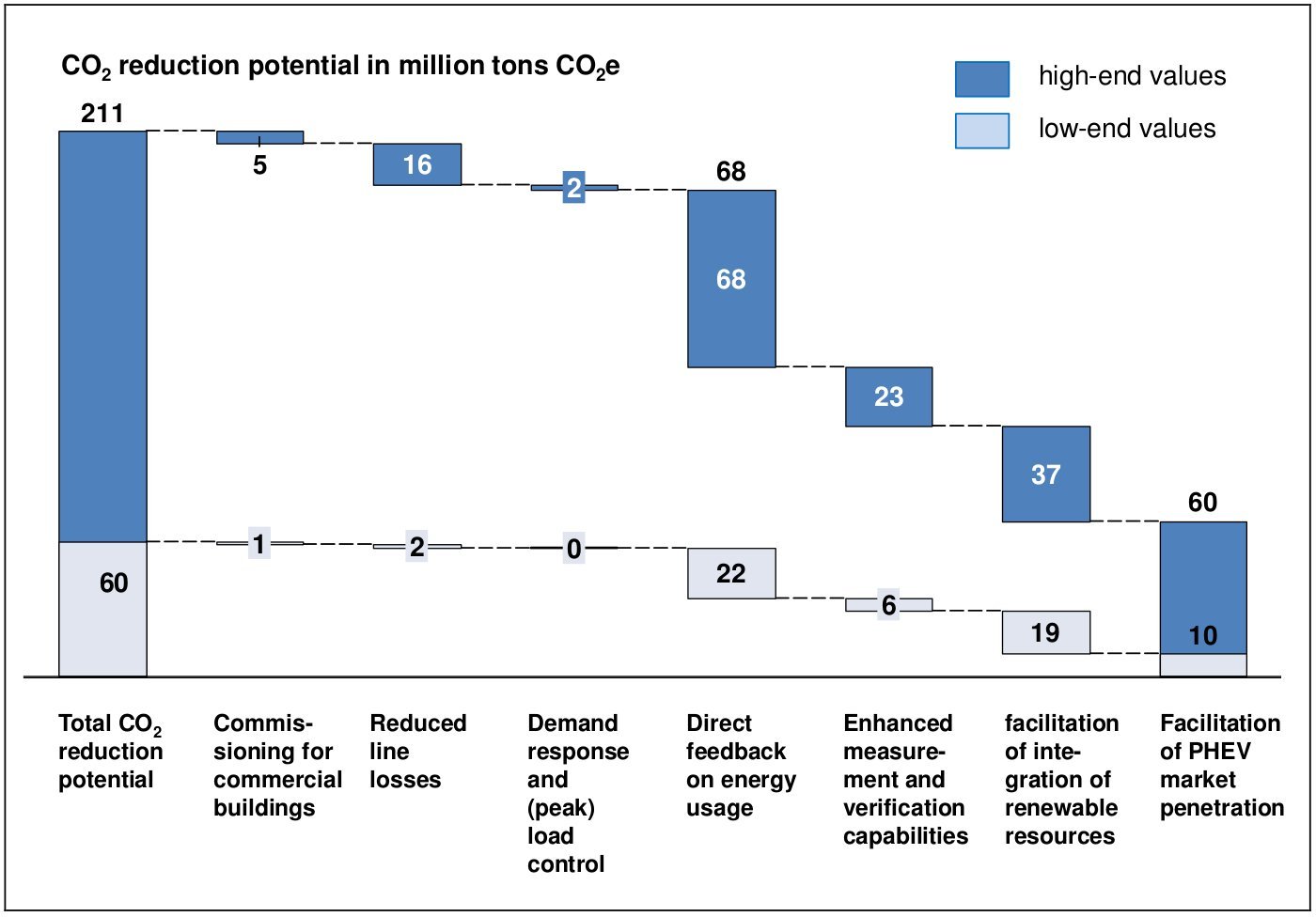
Table 3: Positive Environmental Impact of smart microgrids according to EPRI (2008) [4].
Challenges
As there are fluctuations of power generation in microgrids because of unavoidable natural hazards and also because the number of EVs charging simultaneously
is unknown, the power sharing between neighborhood microgrids have to deal with the following challenges:
- Integration of stochastic renewable resources
- V2G and G2V issue
:
- Policy/Protocol required for using EVs batteries as power storage
- V2G, EVs providing power:
- High priced interval
- Emergency power need
- G2V, EVs consuming power:
- Wireless and sensor based infrastructure:
- Monitoring battery charge
- Battery charging and discharging schedule and execution
- Integration of community based battery bank
- Communication and control required over microgrids for power generation and consumption
- Management System for Intelligent Power Transmission and Distribution between microgrids
- Transition between "grid connected" and "islanded" mode of microgrids
- Smart Metering
- Frequency and voltage regulation
- Cyber Security
Research directions
G2V and V2G models
The stochastic nature of the EVs load means that the conventional approach for load characterization may not work in G2V (grid to vehicle) services [6].
This means that the number of EVs that are currently in charging and in SOC before charging, are independent of time. In this respect, research on load
forcasting, load modeling and load distribution of smart microgrids are required. The load on the smart microgrids can be evenly distributed by varying
peak hour prices and off-peak hour prices of electricity, in order to ensure the smooth operation of microgrids.
V2G services are also considering the EVs as being stochastic and distributed in nature. The EVs to smart microgrid interfacing, distributed storage
aggregation, encillary services, energy exchange technology, policy issues with diversified markets are the major research concern of V2G services.
Integration of renewable power sources
The smart microgrids are different from the existing grid distribution system because they add energy sources to the customer system, which is historically
considered as load only. Initially the microgrids will use the existing grid as the main energy source. Gradually, new local energy sources can be added until
they can be isolated from the existing power grid system. All renewable power sources are intermittent in nature. Modelling of the power sources, the design
and planning of the required power sources, the gradual isolation policies from the existing power grids are the active research areas in this field.
Power transmission and distribution
The smart microgrids are bidirectional energy transmission, distribution and communication networks. They need suitable technologies, protocols and messaging
to send commands to various components of the smart microgrids. The vision of smart microgrids is to replace the whole power grids with smart microgrids energy
transmission and distribution networks. Thus new energy networks may require energy and control transmission from one microgrid to another. Smart policies,
protocols are required to optimize internal and/or external power transmission, distribution and management of electric energy microgrids networks.
Smart microgrids communication technologies
Several network technologies are deployed to enable control and management of smart microgrid components. LAN technologies connect different smart devices at
customers site, which can be classified into three categories: wireless, wired Ethernet and building power communication. Wireless includes Wi-Fi, WiMax, Zigbee
and Bluetooth. WAN technologies can be used to control and to manage smart microgrid components. There are various wide area network technology such as ADSL,
cable modem, fiber to home, cellular network services, satellite services etc. Choice of WAN technologies will depend on various factors such as geography,
population densities, availability, as well as the reliability of the technology, the cost, the security and the network infrastructure that is already
available [4]. The Table 4 shows the strength and weaknesses of different WAN technologies. It’s emphasized that the ADSL is highly available but its bandwidth
decreases with the increasing distance, while the cable modem has high bandwidth and high availability, but inconsistent in bandwidth if the number of user increases.
The fiber to home is highly available in urban area, it has high bandwidth and security, but it incurs high deployment costs. Cellular services have a high coverage
area, potentially low costs, but security and policy matters. WiMax deployment does not require huge investment as compared to wired network, but bad weather may
reduce the transmission range. The satellite service, as universally available technology, has high cost, low effective bandwidth and low reliability during bad
weather condition.
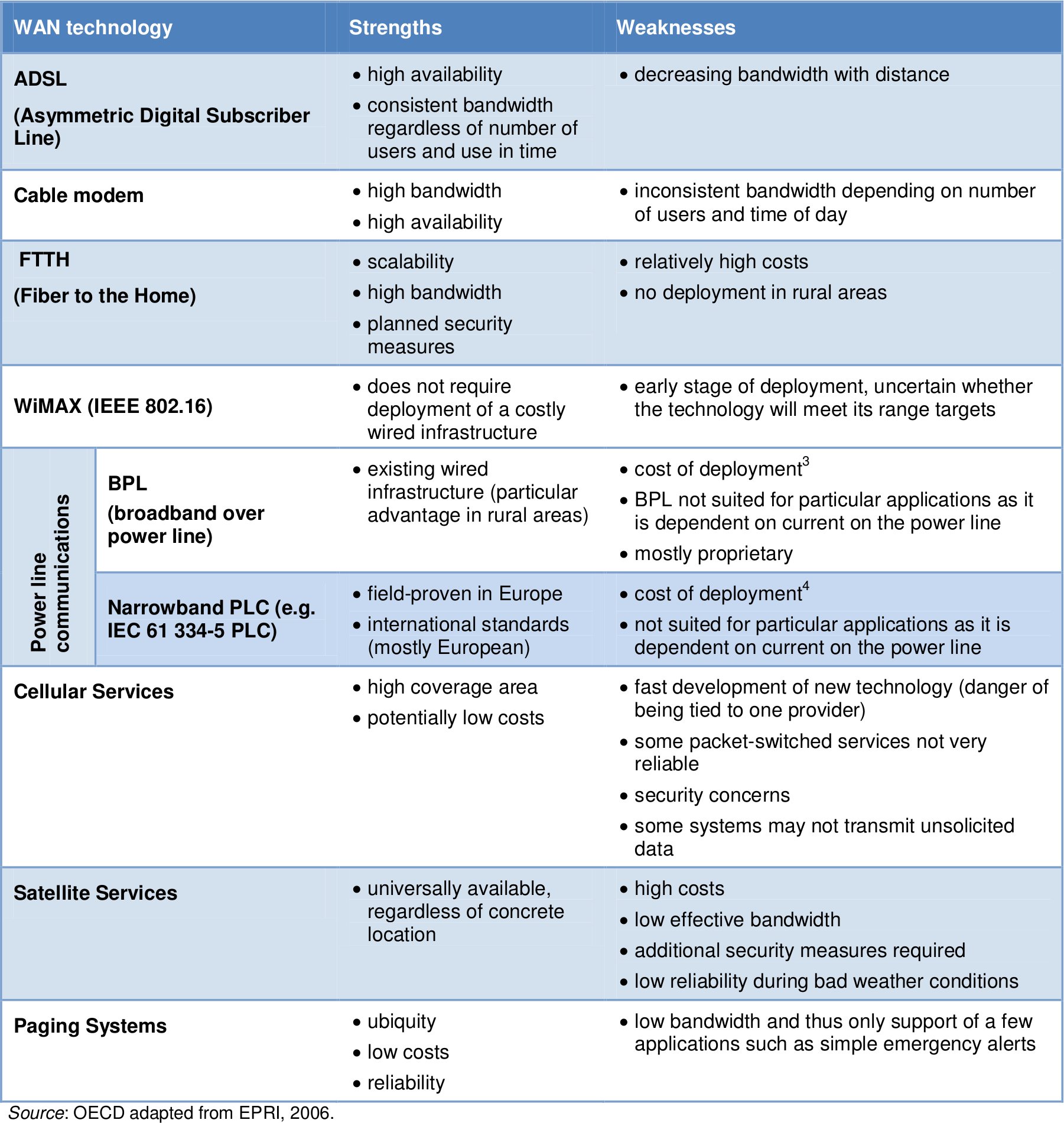
Table 4: Strengths and Weaknesses of different WAN technologies [4].
Cyber security of smart microgrids
The smart microgrids differ from the conventional communication networks because they are able to reach every equipment residing in user premises and return with
energy control information to the microgrid central control system. The microgrids smartly determine the current energy requirement and decide to distribute and
transfer according to the demand, possibly with valley filling algorithms. So the security of the user data and the secure transmission of control and electric
energy demands are usual concerns.
Researchers
Advisors
- Prof. Chadi Assi
- Prof. Martin Maier
Graduate Student
- Mosaddek Hossain Kamal Tushar
Publications
- M. H. K. Tushar, C. Assi, and M. Maier,
“Distributed Real-Time Electricity Allocation Mechanism for Large Residential Microgrid,”
IEEE Transactions on Smart Grid, vol. 6, no. 3, pp. 1353-1363, May 2015
- B. P. Bhattarai, M. Lévesque, M. Maier, B. Bak-Jensen, and J. R. Pillai,
“Optimizing Electric Vehicle Coordination Over a Heterogeneous Mesh Network in a Scaled-Down Smart Grid Testbed,”
IEEE Transactions on Smart Grid, vol. 6, no. 2, pp. 784-794, March 2015
- A. Belgana, B. P. Rimal, and M. Maier,
“Multi-Objective Pricing Game Among Interconnected Smart Microgrids,”
Proc., IEEE Power & Energy Society General Meeting, National Harbor, MD, USA, July 2014.
- M. H. K. Tushar, C. Assi, M. Maier, and M. F. Uddin,
“Smart Microgrids: Optimal Joint Scheduling for Electric Vehicles and Home Appliances,”
IEEE Transactions on Smart Grid, vol. 5, no. 1, pp. 239-250, Jan. 2014.
- X. Liu, L. Ivănescu, R. Kang, and M. Maier,
“Real-time Household Load Priority Scheduling Algorithm based on Prediction of Renewable Source Availability,”
IEEE Transactions on Consumer Electronics, vol. 58, no. 2, May 2012.
References
[1]
|
H. Farhangi,
“Path of the smart grid,”
IEEE Power & Energy magazine, pp. 18-28, January/February, 2010.
|
[2]
|
J. N. Edward, A. Ramadan, El-Shatshat,
“Multi-Microgrid Control Systems (MMCS),”
IEEE Power and Energy Society General Meeting, pp. 1-6, 25-29 July, 2010.
|
[3]
|
International Energy Agency,
“CO2 emissions from fuel combustion: highlights,”
2011 Edition, OECD/IEA, International Energy Agency, 9 rue de la Fédération 75739 Paris Cedex 15, France.
|
[4]
|
OECD,
“Smart Sensor Networks: Technologies and Applications for Green Growth,”
OECD Report, December 2009.
|
[5]
|
C. C. Chan,
“An Overview of Electric Vehicle Technology,”
Proc. of IEEE, pp.1202-1213, Vol. 81, No. 9, September 1993.
|
[6]
|
S. B. Peterson, J. F. Whitacre, J. Apt,
“The economics of using plug-in hybrid electric vehicle battery packs for grid storage,”
Journal of Power Sources, pp. 2377-2384, vol. 195, issue. 8, 15 April, 2010.
|
|
|
|
|
| |